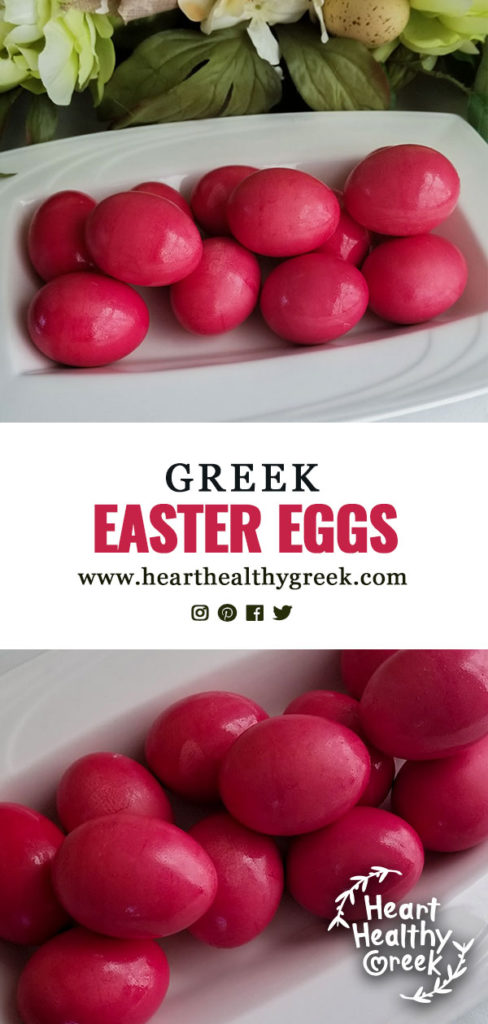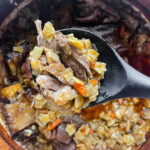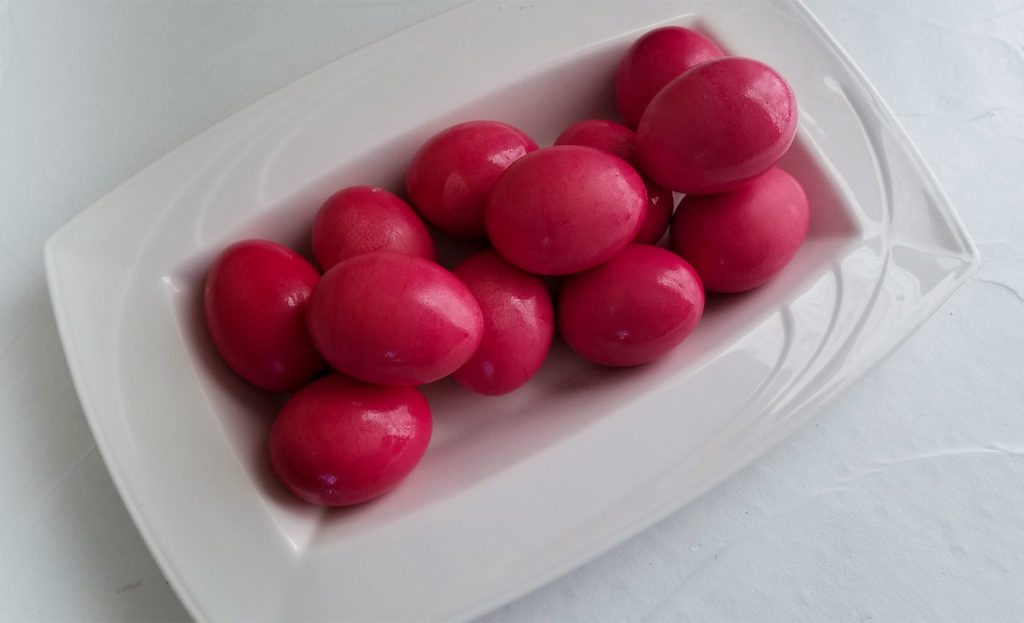
Growing up in a Greek family one of the highlights of Easter dinner was playing Tsougrisma with our Greek Easter Eggs. It’s the tradition of cracking eggs that have been dyed red. Why do we dye the eggs red? The color red represents the bloodshed by Christ on the cross on Holy Thursday. I carried this favorite childhood tradition into our home, and have passed this along to my children, who love it as much as I did (and still do!).
Helpful Hints for dying Greek Easter Eggs
Some helpful hints we’ve gathered over the years for dyeing the eggs: prewash your eggs to remove any film that may be present on the shells. By not prewashing the eggs, there is a chance the dyed eggs may end up spotting. Before boiling/dyeing, bring your eggs to room temperature, otherwise, you run the risk of the eggshells cracking while cooking. After dyeing the eggs and removing them from the pot, dry them off and rub with a bit of olive oil to give them a beautiful shine. Just remember to leave the clear nail polish in the bathroom cabinet!
One more trick that my Yiayia taught me was spinning the eggs to determine whether or not they’ve been thoroughly cooked. To test, remove one of the eggs from the boiling water and spin it on the kitchen counter. If the egg spins without wobbling, the egg is cooked. If you’re not sure whether or not there’s a wobble to the egg, spin an uncooked egg for reference.
Advertisement
We buy our Greek egg dye at our local Greek food store, but the dye can also be bought online. Each different brand has its own directions, so just make sure to follow the steps listed on the packaging. Keep in mind, the brand doesn’t matter, as the Dyed Greek Easter Eggs will be so vibrant!
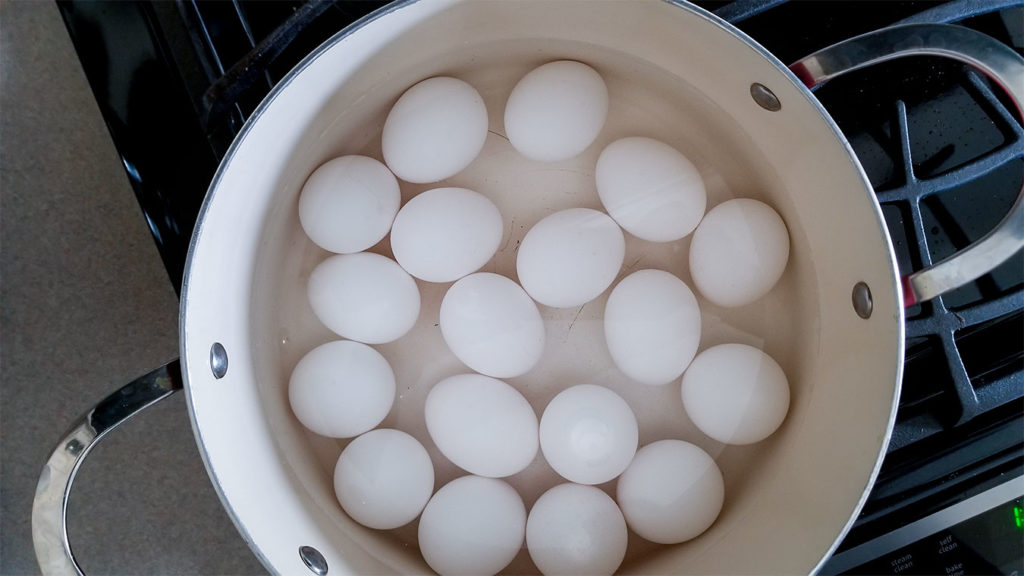
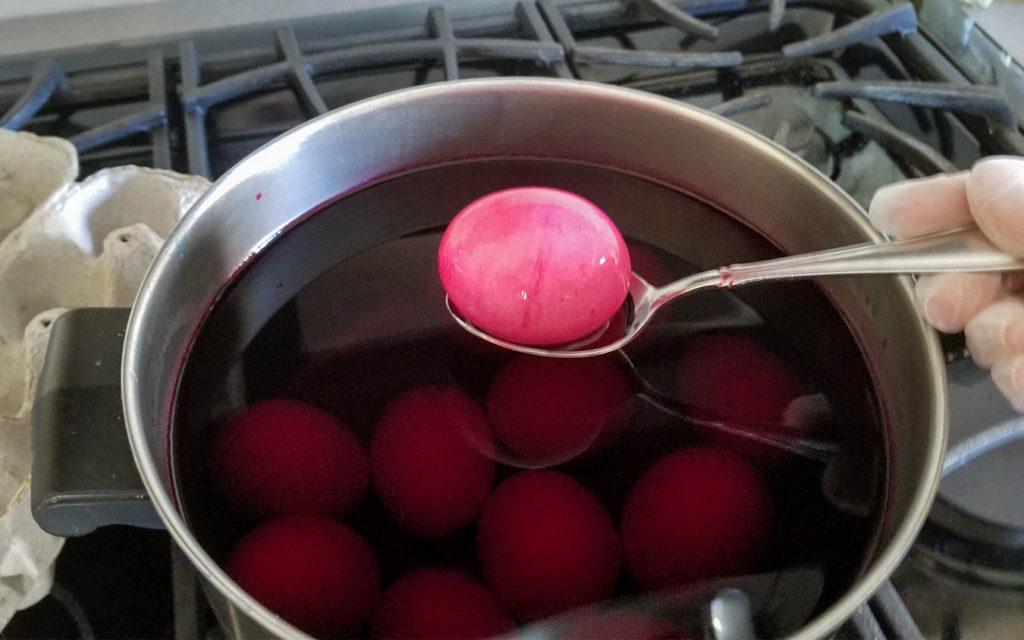
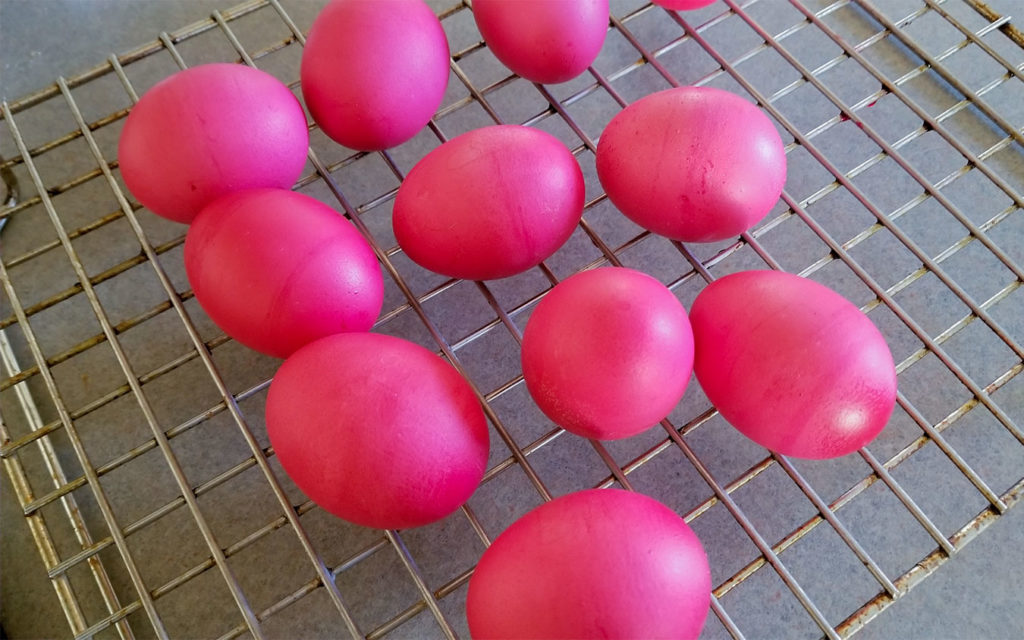
Let’s Play!
After dinner on Easter Sunday everyone chooses their own special egg, hoping that they’ll be the one holding the unblemished, championship egg at the end. To play, each person holds their chosen egg and taps their egg against another person. The phrase Christos Anesti (Christ Is Risen) and Alethos Anesti (Indeed he has Risen) is said while tapping eggs. The cracking of the eggs symbolizes Christ’s resurrection from the dead. The goal of Tsougrisma is to try and crack the other person’s egg, while yours remains intact. If in the end, you are the sole person with one or both ends of your egg intact you are the lucky winner! What do you win? Bragging rights and good luck for the entire year!
Be forewarned, however, that Tsougrisma can get very competitive–and don’t make the fatal mistake of underestimating the Yiayia’s strength! We kid, as this is an extremely fun tradition. A favorite story from the past years is the year that our cousins came bearing their own eggs (a HUGE red flag!). The cousins’ kids (after careful inspection) had reinforced their egg’s shell with clear nail polish! Some people will do anything just for a little extra luck! We guarantee that this game will not only bring out the competitive side but a lot of laughter, too!
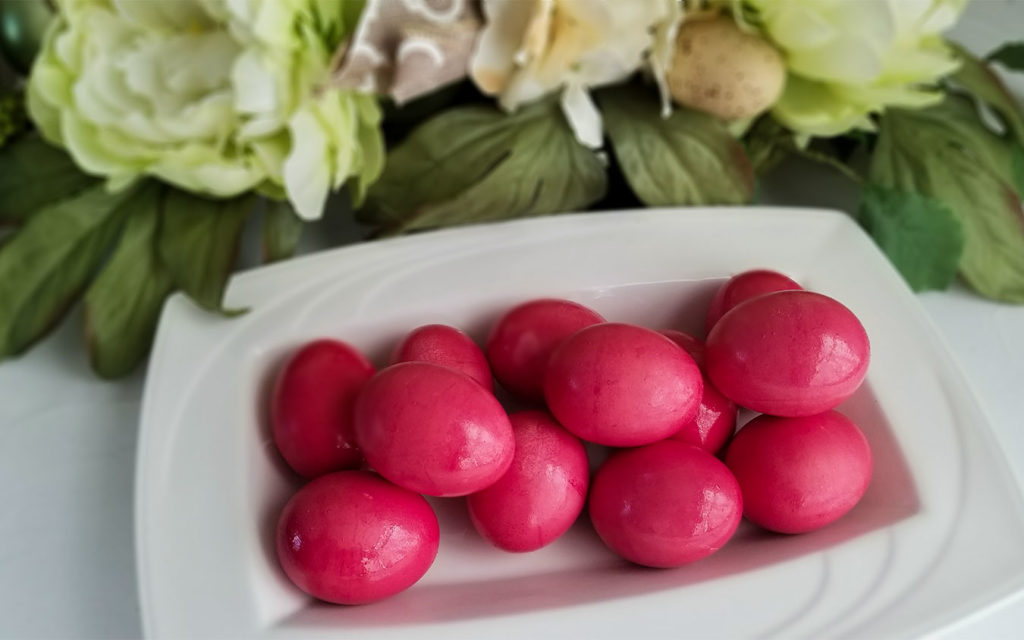
After the eggs are cracked and the excitement has subsided, you can feel free to eat the eggs along with Easter dinner or enjoy them in the days following Easter. We like to plate them with some Kalamata olives and feta cheese for a delicious snack!
Have fun cracking…and good luck!!
Does your family play Tsougrisma on Easter Sunday? Tell us about it! Leave a comment below and be sure to tag us using #Hearthealthygreek! And if you aren’t already, be sure to follow us on Facebook, Instagram, and Pinterest for our latest recipes.
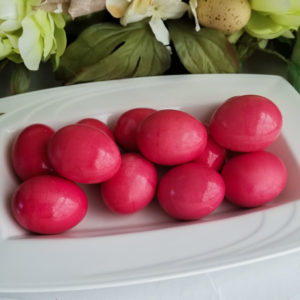
Greek Easter Eggs
Ingredients
- 1- 2 dozen eggs
- 1 cup vinegar
- Greek Egg Dye
- olive oil
Instructions
- Prewash eggs and dry.
- Allow eggs to come to room temperature.
- Place room temperature eggs in a single layer in a pot filled with cool water.
- Bring the water to a gentle boil, reduce heat to medium low and cook for 15 minutes. Test the eggs doneness by spinning the egg on the counter, if it spins without wobbling the egg is cooked.
- Once eggs have cooked, allow them to cool.
- Dissolve the dye in a class of hot water.
- In a pot containing hot water, add one cup of vinegar and the dissolved dye, stirring well.
- Carefully add the cold eggs and allow them to dye for 3-5 minutes. To check the color of the eggs, use a spoon to lift an egg out of the dye to see the color.
- Place egg back in dye if it needs more time.
- Using a slotted spoon remove eggs from water and dry them with a paper towel.
- To make eggs shine, take a clean paper towel and moisten it with olive oil and rub the egg carefully.
- Place dyed eggs back in their original container, which is perfect for storing the eggs. Return the eggs to the refrigerator until ready to use. Kalo Pascha!

